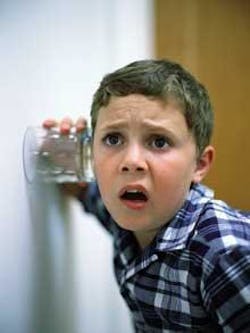Active Listening:We hear it's vital to respected dental practices
By Stanley Weiss, DDS
As a dentist and psycho-therapist, I've found listening is overlooked in dentistry. While hearing is a natural physiological process, listening is not. We cannot not hear — unless we have a physical hearing disability — but we can not listen.
Listening is the most important communication skill — one every dentist should cultivate. It is the foundation of all communication and relationship skills. Dentists must commit time to listen without interruption to what patients and staff members communicate. In addition, you must devote energy to concentrate on blocking everything else to absorb what patients convey.
Listening is related to being open-minded, sensitive, empathetic, and able to concentrate without distractions or interruptions.
Listening to patients and staff members does not translate into solving problems. Often, letting a patient vent without our commenting is sufficient to ease his or her dental apprehension.
To know patients, we must listen to them. With new patients, rely on experience to elicit dental and medical information, show how well you listen, and project personality and attributes such as your caring, humanity, and sense of humor. This impresses patients. Also, train your staff — and in particular, your receptionist in listening. He or she is the first contact patients make with your office, both on the phone and in person. Your receptionist's listening is almost as vital as your own.
An inability to listen will be judged harshly. Your patients might interpret it as your not caring, disinterest, lack of empathy, or even incompetence. Listening increases your credibility, enhances your patients' confidence, increases rapport, and improves the doctor-patient relationship. Listening leads to greater case acceptance.
No intimate relationship may begin or endure successfully without all parties having the capability to listen. People open up to total strangers who will listen — hair dressers, bartenders, and people sitting next to them on planes. Most people have done this.
Two minutes and hijacking
Since you can't listen and speak at the same time, you must give equal attention to both because each is necessary to maintain relationships, and in particular, those in dental offices. I use the "two-minute test." Next time you speak with someone, see how long it takes before you get interrupted. Few people can endure two minutes of listen-ing without interrupting. Oftentimes, they want to tell you similar experiences or feelings, or to disagree with you, or to change the subject. I call this "hijacking the conversation." Does this upset you? Are you turned off? Does it bother you that the other person was not really listening to you, but was just waiting for an opportunity to jump in and give you the benefit of his or her own wisdom?
Many dentists think the way to impress patients is to talk, talk, talk about their thoughts, feelings, and opinions. This may work infrequently. Instead, listen, ask questions based upon what the patient has said, and be attentive to the patient and what he or she says.
Dentists who listen to patients attract new patients and retain old ones. To the contrary, a dentist who does not listen eventually might be shunned because the message he or she conveys is that he or she doesn't care. After this message has been observed, there isn't much hope for a relationship.
Blame your childhood
Why do so many people, including dentists, patients, and staff, have difficulty listening? It's the manner in which we learned or didn't learn to listen. Where do we learn to listen? Were you taught by a professional skilled in communication? Like all other behavior, listening is a "family system" that teaches us our listening skills or lack thereof. Family systems model good and bad behavior. In many families, this is a severe detriment. I've seen families for therapy where the communication style was not to listen, but to yell and scream. Invariably, when I ask why they communicate that way, they tell me that was how their families communicated when they were young.
I'll never forget seeing a patient in his early 30s for the first time. He told me his intense dental fears. I saw him for about 30 minutes, and when he left my office, he told me I was the best dentist he ever saw. Guess what I did for him? Nothing — well, nothing dental. All I did was listen to his fears, explain how I work, and ask what I could do to make his visits as pleasant as possible. For a half hour, he did most of the talking, and I did most of the listening. That's why I was the "best dentist" he ever went to.
Another patient in her late 20s told me her boyfriend's father worked for UPS. A few weeks later, she told me he worked for the U.S. Postal Service. Now, does it really matter whether her boyfriend's father worked for UPS or the post office? Absolutely not. Nevertheless, I wanted to convey a message to her. I reminded her that about a month ago, she told me her boyfriend's father worked for UPS — not the U.S. Postal Service. The message was received. I know because she said to me, "Stan, you really listen, and I like that." Your dental patients will react similarly.
Game on
Have you ever played the game in which 10 people form a line, then someone whispers something to the first person? Each succeeding person tells the next what the previous one said. By the time the message gets to the last person, you wonder if the first and 10th people live on different planets. Why? You guessed it — people don't listen.
Have you talked with a patient in your operatory, then he or she told your receptionist what you said? After the patient left, your receptionist asked if you said this and that to the patient. Oftentimes, the message my receptionist hears has no relevance to what I said to the patient. For important messages, give written instructions.
Non-verbal vs. verbal
Non-verbal active listening involves your entire body, except for your voice. This body language conveys you are there for the person and listening intently. Following are suggestions for active listening —
Face your patient squarely and make eye contact. Get close, but don't invade your patient's personal space. If you're listening to more than one person, make eye contact with each so you don't slight, ignore, offend, or insult anyone. You should be on the same height plane as your patient, with no barriers, such as a desk or table. This is especially important when presenting a case. You don't want to convey a sense of superiority.
Lean forward slightly, but in a non-threatening way. Your posture should be relaxed and convey an open, receptive feeling. Don't cross your arms or legs. Your hands should be relaxed, and your fingers should not fidget or play with anything. Sit upright, not slouched, and not on the edge of your chair.
Nod frequently, not necessarily in agreement, but to convey messages such as "go on," "go ahead," and "I'm listening." To express the same messages with sounds, use both "um-hm," and "uh-huh."
You may react with emotion to what is said using facial expressions. You don't have to maintain a blank, poker face. Raising your eyebrows, smiling, and frowning show your sadness, surprise, anger, and happiness.
Don't sigh, as in disinterest or boredom. Monitor the time you talk and listen. If you are a good listener, you will listen more than you speak.
Verbal listening suggestions are as follows —
Paraphrase, or state in your own words what a person said. For the beginning of your paraphrase, you may use phrases such as "What I hear you saying is U ," "In other words U ," "So, basically how you felt was U ," "Do you mean that U ?"
Clarify, or ask questions until you understand. It shouldn't become intrusive. Your questions should elicit enough information for you to understand the situation. Try not to use "why" in your questions, because the term's connotation, for many people, is negative.
Get feedback. You may talk about your reactions in a non-judgmental manner. Share what you think, feel, or sense. Feedback also helps your patients understand the effects of their communication. It's another chance to correct errors or misconceptions and lets patients get a fresh and valuable point of view. Your perception probably will be different than patients'.
Why don't dentists listen well?
Listening blocks include —
Comparing, which entails attempting to assess (while your patient or staff member talks to you) who is brighter, more competent, more hurt, etc.
Mind-reading is when you try to figure out what the speaker really thinks.
Rehearsing occurs when you prepare your response and wait for the lips of your patient or staff member to stop moving.
Filtering means you don't listen to things that annoy you, but listen to items that support your own opinions.
Judging uses labels, stereotyping, or generalizations.
Daydreaming happens when you don't really listen because you're bored.
Problem-solving occurs when you don't listen because you are preparing to present your solution to the problem.
Derailing means you'll do anything to change discussions or criticism directed at you.
Summary
What you invest in listening will be returned to you economically in patient retention and referrals. To most of your patients, your listening is more important than your mechanical skill.
• "Listening to" and "hearing" patients are not synonymous.
• Listening is the most important communication skill in achieving a successful dental practice.
• Humans can process some 600 words a minute. A fast talker speaks at a rate of 100 to 150 words a minute. As a result, our minds tend to wander.
• Immediately after hearing patients speak, we probably will retain half of what we heard.
• Two months later, we likely will retain only 25 percent of what we heard.
• The average adult spends 70 percent of his or her waking hours communicating. Of this, 9 percent is writing, 16 percent reading, 30 percent speaking, and 45 percent listening.
• Listening is not a natural process, but a skill that must be learned and nurtured.
• Too many dentists prefer talking to listening.

